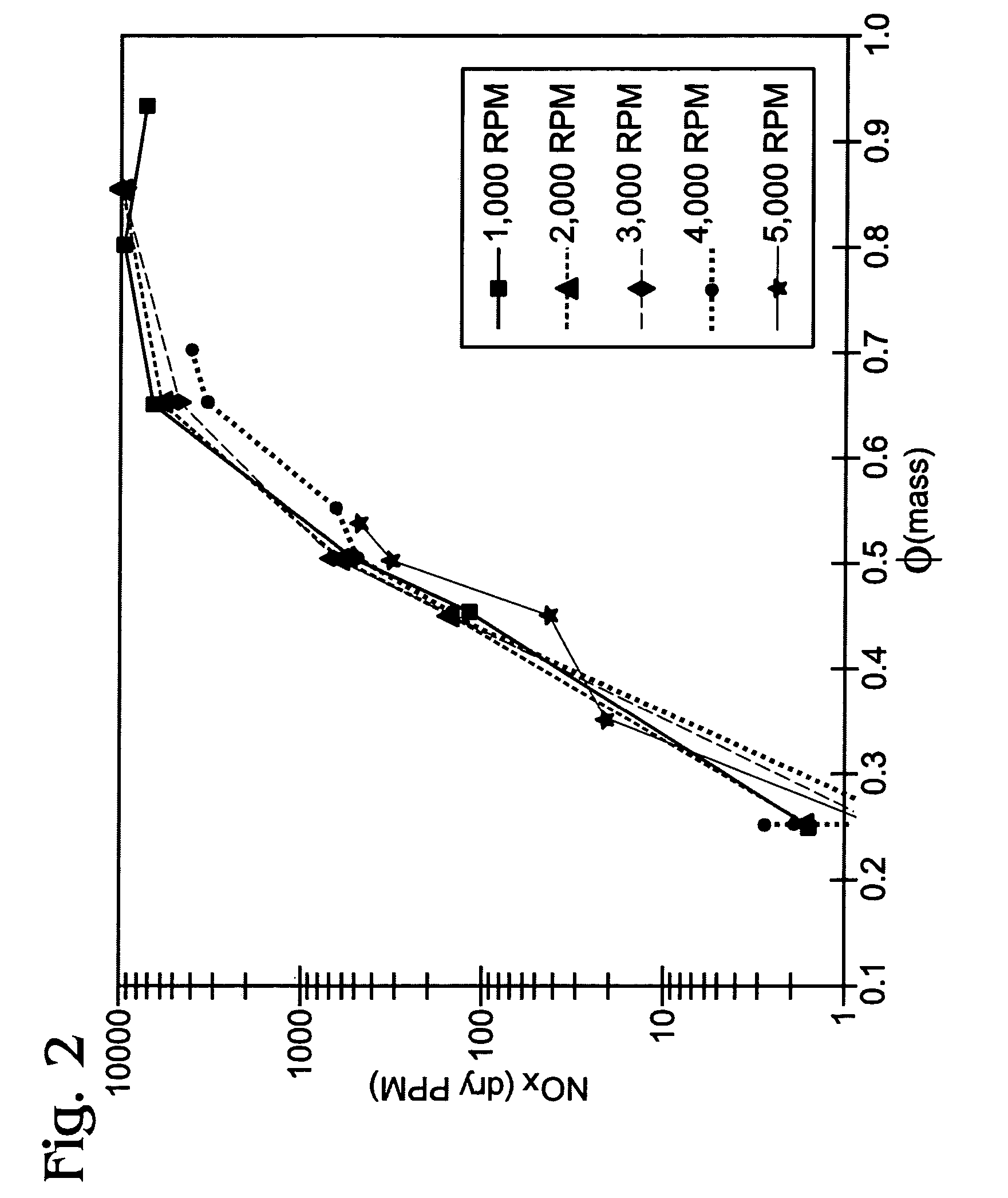Boost control for internal combustion engine using substantially carbon-free fuel
a technology of internal combustion engine and substantially carbon-free fuel, which is applied in the direction of electric control, machines/engines, mechanical equipment, etc., can solve the problems of reducing the performance level by about 14%, increasing the displacement of the engine, and increasing the weight of the engine. , to achieve the effect of reducing nox emissions, increasing the displacement of the engine, and increasing the weight of the engin
- Summary
- Abstract
- Description
- Claims
- Application Information
AI Technical Summary
Benefits of technology
Problems solved by technology
Method used
Image
Examples
Embodiment Construction
[0011]The present disclosure relates to a strategy for controlling boost in an internal combustion engine configured to use a substantially carbon-free fuel (such engines are herein referred to as substantially carbon-free engines). Hydrogen (H2) may be used as a substantially carbon-free fuel in accordance with this disclosure, although that is not required.
[0012]FIG. 1 schematically shows an internal combustion engine 10 that is configured to convert substantially carbon-free fuel into mechanical energy. Engine 10 may include one or more cylinders, one of which is illustrated at 12. Cylinder 12 includes a combustion chamber 14 at least partially defined by cylinder walls 16 and a moveable piston 18.
[0013]Combustion chamber 14 is in fluid communicates with an air intake manifold 30 via intake valve 32. The air intake manifold can be used to deliver air, including oxygen (O2), to the combustion chamber for combustion. The intake valve can be controlled so that a desired flow of air ...
PUM
 Login to View More
Login to View More Abstract
Description
Claims
Application Information
 Login to View More
Login to View More - R&D
- Intellectual Property
- Life Sciences
- Materials
- Tech Scout
- Unparalleled Data Quality
- Higher Quality Content
- 60% Fewer Hallucinations
Browse by: Latest US Patents, China's latest patents, Technical Efficacy Thesaurus, Application Domain, Technology Topic, Popular Technical Reports.
© 2025 PatSnap. All rights reserved.Legal|Privacy policy|Modern Slavery Act Transparency Statement|Sitemap|About US| Contact US: help@patsnap.com



